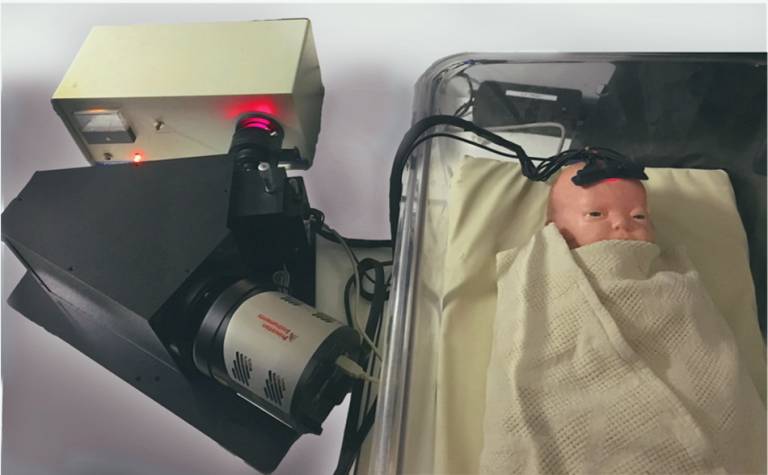In the news: UCL medical device could save “thousands of babies” from brain damage and death
2 January 2020
Research published in the Neurophotonics journal by the Multimodal Spectroscopy group garners interest in the media

A recent article in The Telegraph covers the advances made by UCL’s researchers to save potentially “thousands of babies” from brain damage and death due to neonatal encephalopathy. The use of the miniCYRIL device, developed by Dr Ilias Tachtsidis’ research group in the Department of Medical Physics & Biomedical Engineering, was published in Neurophotonics last year.
Dr Tachtsidis told The Telegraph, “We had to develop a device that could provide a marker of brain injury severity very early after birth, allowing the clinical team treating the infant to understand the extent of injury.
“The measurement has to be non-invasive, harmless, work in real time and be at the baby’s cot side. This was a true engineering challenge that led us to develop miniCYRIL, a compact, low-cost instrument that can be used by medical staff with minimum training.”
The instrument created by Dr Tachtsidis and the Multimodal Spectroscopy research group is a miniature broadband near-infrared spectroscopy (bNIRS) system which measures brain tissue changes that might indicate injury in the brain.
The Telegraph article also featured Professor Nicola Robertson of UCL’s Institute for Women’s Health, who said that “it is crucial to be able to detect babies at high risk of adverse outcome early on and such markers produced by miniCYRIL will allow us to target the artillery of other therapies to help to improve outcomes in babies with neonatal encephalopathy.”
Prof Robertson further added in the article, “neonatal encephalopathy is a leading cause of disability in the UK, and worldwide is responsible for more than a quarter of newborn deaths.”
Read the full Telegraph article here
Find the Neurophotonics journal article here
 Close
Close

